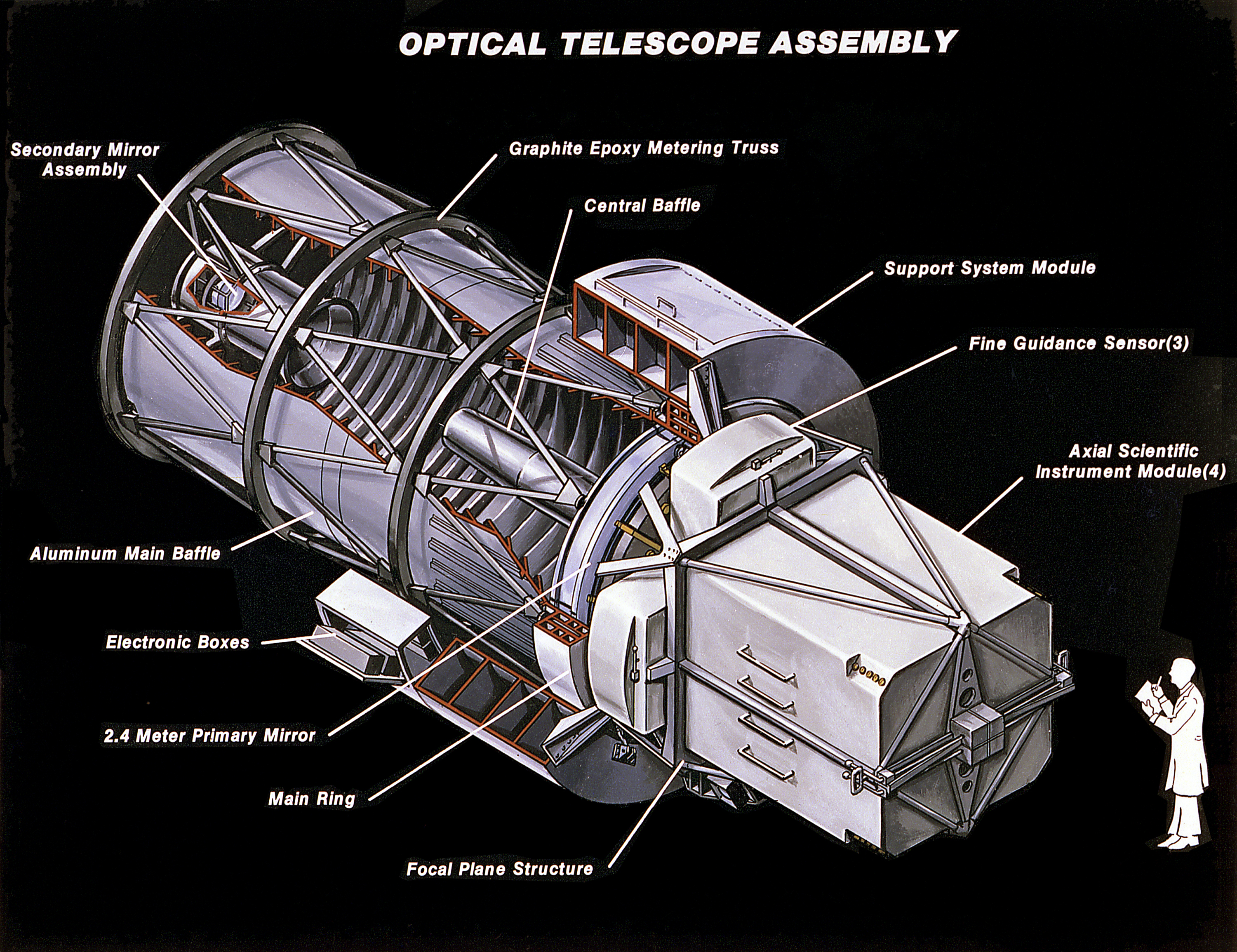
Hubble Space Telescope Optical Telescope Assembly – Diagram
This image illustrates the Hubble Space Telescope's Optical Telescope Assembly (OTA). One of the spacecraft's three major elements, the OTA consists of two mirrors (a primary mirror and a secondary mirror), support trusses, and the focal plane structure. The mirrors collect and focus light from selected celestial objects and are housed near the center of the telescope. The primary mirror captures light from objects in space and focuses it toward the secondary mirror. The secondary mirror redirects the light to a focal plane where the scientific instruments are located. The primary mirror is 94.5 inches (2.4 meters) in diameter, and the secondary mirror is 12.2 inches (0.3 meter) in diameter. The purpose of Hubble, the most complex and sensitive optical telescope ever made, is to study the cosmos from a low Earth orbit. By placing the telescope in space, astronomers are able to collect data that is free of Earth's atmosphere. Hubble detects objects 25 times fainter than the dimmest objects seen from Earth and provides astronomers with an observable universe 250 times larger than is visible from ground-based telescopes, extending our view more than 13 billion light-years away. Hubble views galaxies, stars, planets, comets, planet formation in other solar systems, and even unusual phenomena such as quasars, with 10 times the clarity of ground-based telescopes. The spacecraft is 42.5 feet (13 meters) long and weighs 25,000 pounds (11,600 kilograms). Hubble was deployed from the Space Shuttle Discovery (STS-31 mission) into Earth orbit in April 1990. The Marshall Space Flight Center was responsible for the design, development, and construction of the observatory. The Perkin-Elmer Corporation in Danbury, Connecticut, developed the optical system and guidance sensors. The Lockheed Missile and Space Company of Sunnyvale, California, produced the protective outer shroud and spacecraft systems, and assembled and tested the finished telescope.
